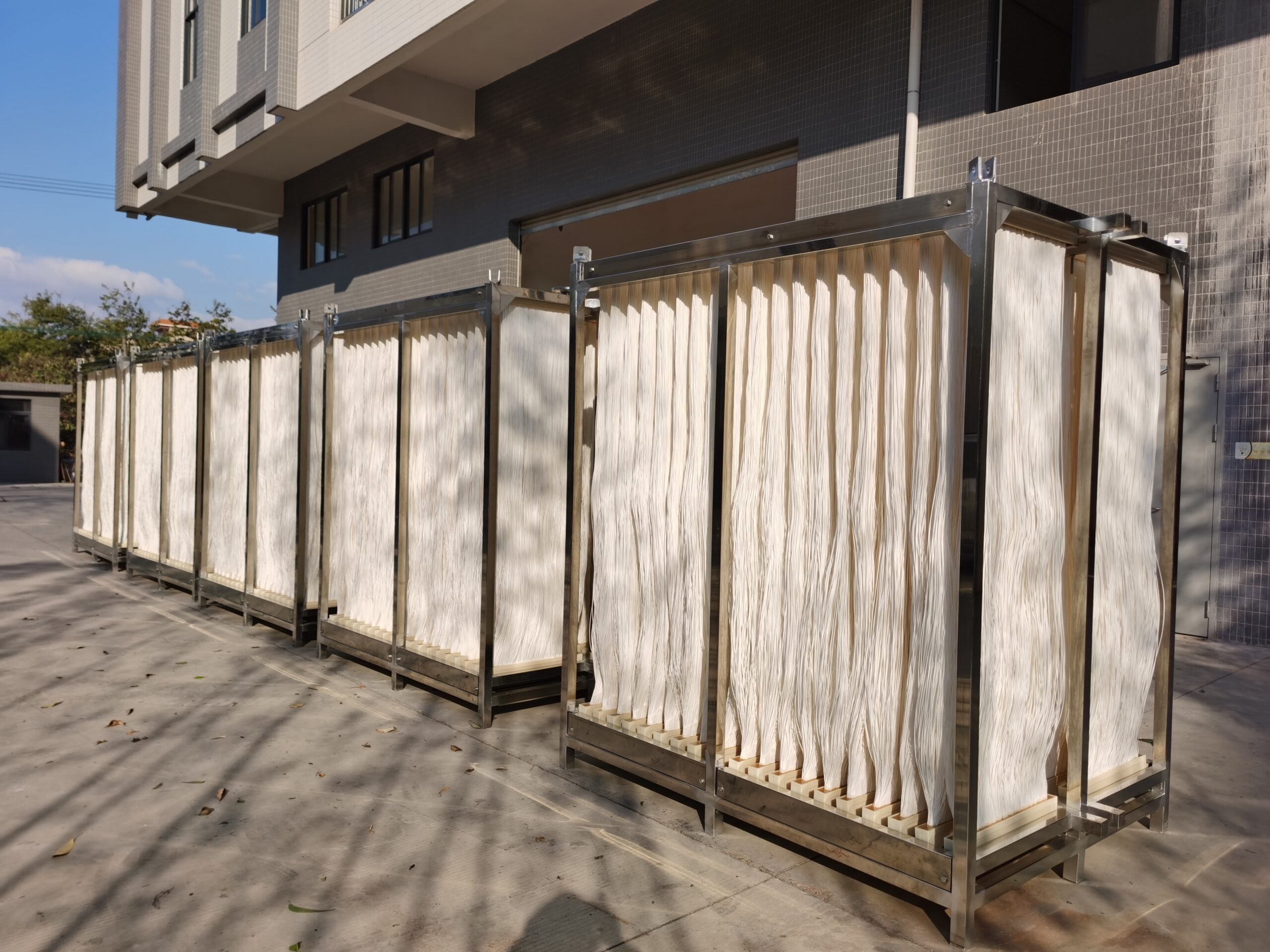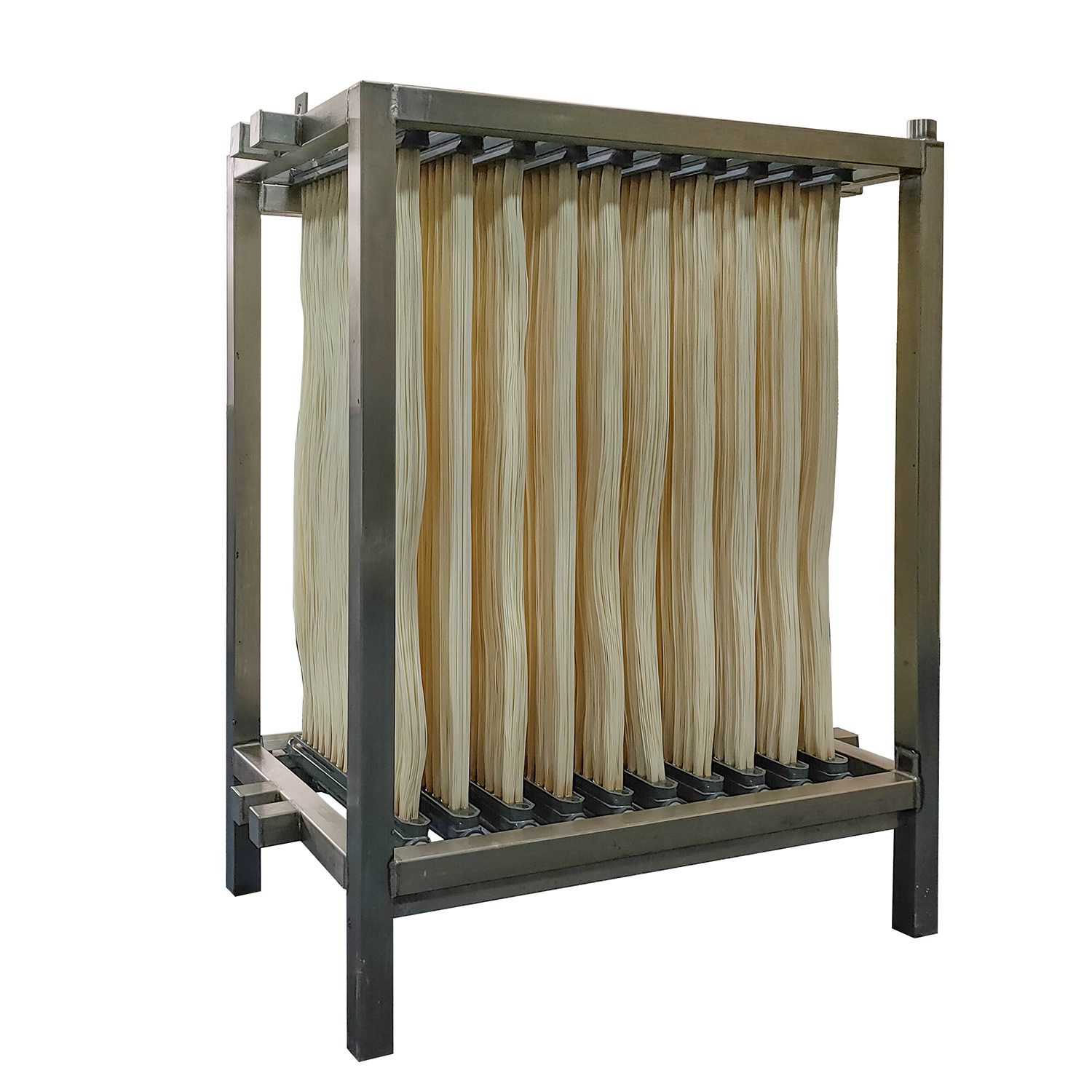How Membrane Bioreactor Technology Is Revolutionizing Wastewater Treatment
How Membrane Bioreactor Technology Is Revolutionizing Wastewater Treatment
Blog Article
Membrane Layer Bioreactors Explained: Reliable Solutions for Tidy Water
Membrane bioreactors (MBRs) have emerged as a sophisticated solution for attending to the pushing challenges of wastewater treatment - Membrane Bioreactor. By integrating biological procedures with advanced membrane purification, MBRs not just boost the high quality of treated water however also minimize the spatial requirements of therapy facilities.

What Are Membrane Bioreactors?
Membrane bioreactors (MBRs) are sophisticated wastewater treatment systems that combine organic degradation processes with membrane filtering modern technology. This assimilation permits the effective elimination of pollutants from water, making MBRs a favored selection in different applications, including municipal wastewater treatment and commercial effluent management.

One of the essential benefits of MBRs is their capacity to create premium effluent, frequently appropriate for reuse in irrigation or industrial processes. Additionally, MBRs require a smaller sized footprint contrasted to conventional therapy systems, making them perfect for city setups where space may be limited.
Moreover, MBRs can successfully take care of varying influent loads and are much less prone to the results of toxic shocks. These attributes contribute to their expanding popularity as a sustainable solution for resolving the boosting need for tidy water while decreasing environmental influences.
Just How Membrane Bioreactors Job
While the procedure of membrane bioreactors (MBRs) might appear complicated, it fundamentally rotates around the harmony in between biological procedures and membrane purification. MBRs incorporate an organic treatment procedure, typically turned on sludge, with a membrane splitting up device to treat wastewater efficiently.
In an MBR system, wastewater is very first introduced right into a bioreactor where microbes degrade raw material and other contaminants. The biological task reduces the concentration of contaminants while advertising the growth of biomass. Following this biological therapy, the blended liquor undergoes membrane layer filtering, which can be microfiltration or ultrafiltration, depending upon the wanted effluent quality.
The membrane layers act as a physical obstacle, permitting water and tiny solutes to pass while retaining suspended solids and bigger particles. This makes it possible for the system to keep a high concentration of biomass within the reactor, boosting the treatment performance.
In addition, the continuous splitting up of cured water from the biomass facilitates a portable style and reduces the impact of the therapy facility. In general, the mix of organic destruction and membrane purification in MBRs leads to reliable and trusted wastewater treatment, ensuring premium effluent ideal for different applications.
Benefits of MBR Innovation
One of the vital benefits of membrane layer bioreactor (MBR) innovation is its capacity to create high-quality effluent with a substantially decreased impact compared to traditional wastewater therapy methods. MBR systems effectively combine biological therapy and membrane filtering, causing exceptional removal of contaminants, including put on hold solids, pathogens, and natural matter. This ability results in effluent that usually fulfills or exceeds stringent regulative requirements for reuse and discharge.
Additionally, MBR innovation enables higher biomass focus, which boosts the therapy effectiveness and minimizes the needed activator quantity. go to my blog This compact design is specifically helpful in urban areas where space is restricted. The operational flexibility of MBR systems likewise indicates they can adapt to varying influent high qualities and flow prices, making them appropriate for a wide variety of applications.
Moreover, the reduced sludge manufacturing connected with MBR processes adds to decrease operational and upkeep expenses. The membranes work as a physical barrier, lessening the risk of blocking and allowing longer functional durations in between cleansing. Overall, the advantages of MBR modern technology make it an eye-catching solution for sustainable wastewater therapy, resolving both environmental concerns and the need for reliable resource management.
Applications of Membrane Bioreactors
With their versatility and performance, membrane bioreactors (MBRs) discover applications across different sectors, including municipal wastewater treatment, commercial processes, and also water improvement. company website In municipal setups, MBRs offer a small option for treating wastewater, efficiently getting rid of contaminants while concurrently generating high-grade effluent that fulfills strict regulative criteria. This makes them particularly ideal for areas with restricted area.
In industrial applications, MBR modern technology is made use of for treating procedure water, especially in sectors such as food and beverage, pharmaceuticals, and petrochemicals. These industries profit from MBRs' ability to deal with high natural tons and their efficiency in recouping important sources from wastewater, such as nutrients and water.
Additionally, MBRs play an essential duty in water recovery efforts, enabling the reuse of dealt with wastewater for watering, commercial procedures, and even as potable water after additional therapy (Membrane Bioreactor). Their efficiency in getting rid of pathogens and contaminants makes them a reliable selection for guaranteeing water high quality in different reuse applications
Future of Water Therapy Solutions
The future of water therapy services is positioned for transformative innovations driven by technological advancement and raising environmental understanding. As worldwide water shortage comes to be a pushing concern, brand-new approaches, consisting of membrane bioreactor (MBR) systems, are set to play a critical duty in boosting the performance and sustainability of water therapy processes.
Emerging technologies such as artificial knowledge and equipment discovering are expected to enhance treatment operations, permitting real-time tracking and anticipating maintenance. This will enhance the overall integrity and effectiveness of water treatment centers. Developments in membrane see post products, such as graphene and nanofiltration, assure to enhance permeation rates and decrease fouling, leading to lower power usage and functional costs.
Furthermore, the combination of renewable resource sources right into water therapy plants will certainly add to greener methods. The round economic situation model will certainly additionally get traction, encouraging the recuperation of valuable sources from wastewater, such as nutrients and energy.
Final Thought

Membrane layer bioreactors (MBRs) have emerged as an advanced service for resolving the pushing challenges of wastewater therapy. By incorporating organic procedures with sophisticated membrane layer filtering, MBRs not only improve the quality of cured water however additionally minimize the spatial demands of treatment centers.One of the key advantages of membrane bioreactor (MBR) modern technology is its ability to generate high-quality effluent with a considerably minimized impact compared to standard wastewater treatment approaches.With their versatility and efficiency, membrane layer bioreactors (MBRs) discover applications throughout various industries, including local wastewater treatment, industrial processes, and even water reclamation.In verdict, membrane bioreactors stand for a substantial advancement in wastewater therapy technology, incorporating biological processes with effective membrane layer purification to generate top quality effluent.
Report this page